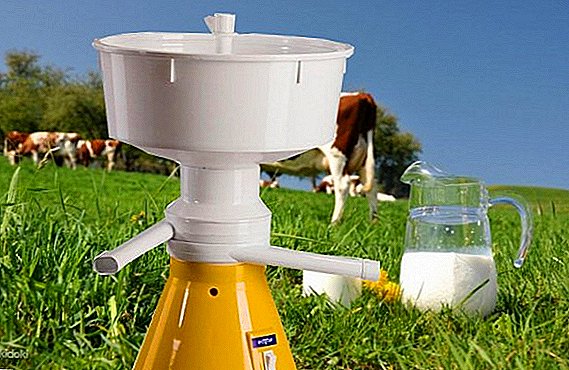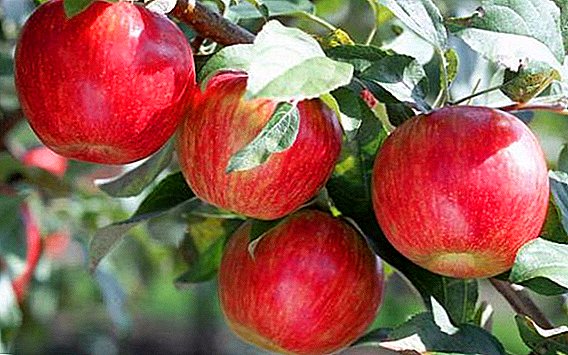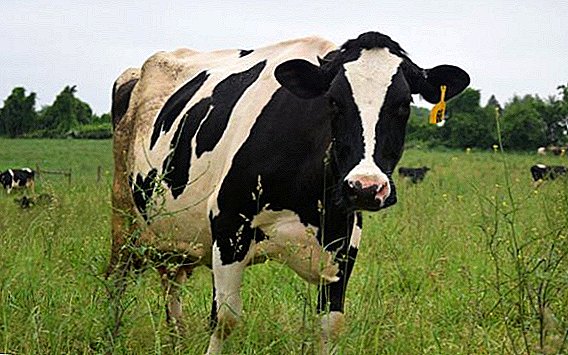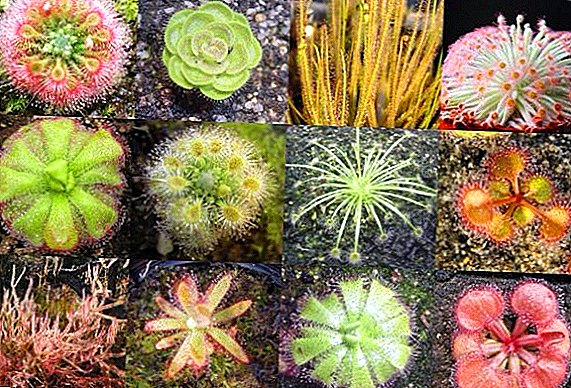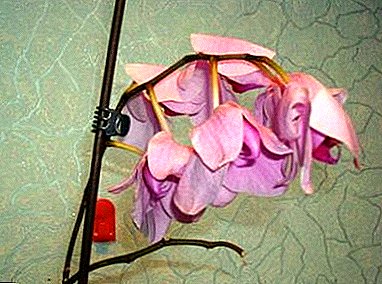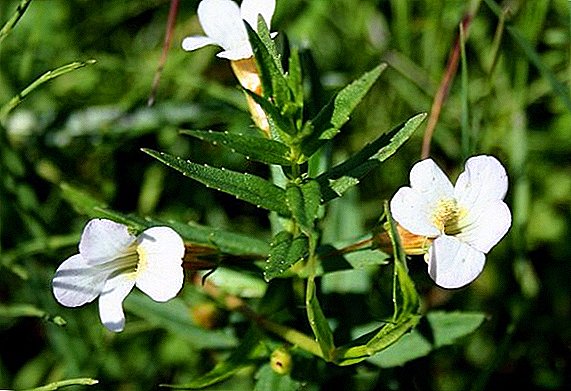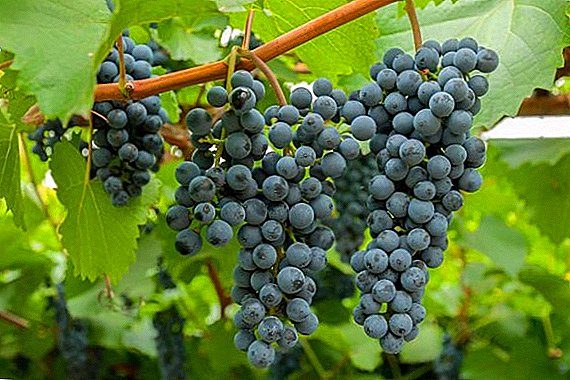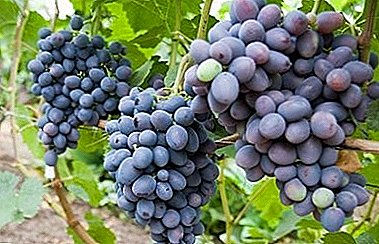
Growing a vineyard in my garden is not such a difficult task. In addition, more and more varieties bred in our climatic latitudes appear on the market.
An example of this is the new grape variety “Gala”, which will be an excellent option both for producing wonderful berries and for decorating the site.
History of grape breeding Gala
“Gala” was bred by the Ukrainian breeder V. Zagorulko by crossing “Kodryanka” and “Present Zaporozhye” in a region with a temperate continental climate.
Immediately after entering the market, the variety was sold at high prices (more than 2000 rubles for a sapling) because of its outstanding qualities.
Currently, seedlings can be purchased for no more than 100-200 rubles, due to the fact that breeders managed to propagate this variety, but it did not lose its remarkable properties.
general information
 Type of variety: table.
Type of variety: table.
Berry color: blue. Just like Augusta, the Witch Fingers, and Karmakoda.
"Gala" - a variety of early ripening, gives large juicy berries, with a bright taste and attractive appearance.
Due to its rapid ripening, Gala grapes are ready for use earlier than many other varieties, which ensures high competitiveness in the market and popularity among gardeners with different levels of experience.
Moor, Angelica and Valek are also distinguished by precocity.
Variety description
- Form of berries: ovoid.
- Taste of berries: sweet with sour.
- The average weight of the vine: 750 g
- Average mass of berries: 9 g.
- Acidity - 6.8 g / l, sugar content - 16.5%.
Berries grow intensively and heap, large conic-shaped vines. The leaves are of considerable size. Flowers are hermaphrodites. Berries are not peas (small and unripe berries are not formed as a result of a lack of pollination).
Maturation period: 110-125 days (early maturing).
Productivity: high and stable, the coefficient of fruiting is 1.3.
Frost resistance: average (the bush maintains temperature up to -21⁰С).
Super Extra, Beauty of the North and Pink Flamingo can also boast good frost resistance.
The level of frost resistance of the variety is sufficient to grow it in the regions of central and middle Russia with mandatory shelter.
Virtues:
- consistently high yield;
- resistance to diseases and pests;
- in taste and appearance of the berries are superior to many other varieties.
disadvantages:
- requires careful maintenance;
- average frost resistance.
A photo
Photos of grapes "Gala":



Diseases and pests
Disease resistance: high (resistance to mildew and oidium 33.5 points).
Gala grapes almost do not attract pests, if you harvest in time - wasp prefers more fruits of predecessor varieties.
Considerable resistance to diseases and fungus is one of the main breeding advantages of a variety, since the use of chemical processing agents is often not required.
As for the prevention of diseases such as anthracnose, chlorosis, bacteriosis and rubella, you can read more about this information in separate materials of the site.
Care
Since the “Gala” will produce a consistently high yield, the vines must be unloaded, pruning them in order to avoid the loss of the palatability of the berries and the speed of their ripening.
This is done in the fall, before covering up for the coming cold weather.
 Shrubs "Gala" practically do not need protection from pests due to natural resistance, but in order to prevent the bushes can be treated with fungicides or Bordeaux liquid 1% concentration.
Shrubs "Gala" practically do not need protection from pests due to natural resistance, but in order to prevent the bushes can be treated with fungicides or Bordeaux liquid 1% concentration.
Processing is carried out immediately before flowering.
Shelter bushes for the cold season: tie the bushes, lay on a specially laid material, fasten, install metal arches on top, which are then stretched polyethylene.
An adult bush “Gala” will need more fertilizer than a young sapling.
Landing
Landing is best done in late spring - when the cold has finally receded.
The pit for planting should measure around 80 centimeters in length, width and depth, with fertile land mixed with half the depth 2-3 buckets of fertilizer.
The distance between the pits for different bushes is at least two meters.
Around the seedling installed in the pit you need to make a small hole to create a layer of mulch (leaves, humus, straw), which is necessary to preserve moisture. The layer is then updated up to shelter for the winter.
Watering
 Proper watering is done exclusively through additional shallow holes with a diameter up to 40 cm - they are dug out at a small distance from the bush.
Proper watering is done exclusively through additional shallow holes with a diameter up to 40 cm - they are dug out at a small distance from the bush.
This method allows you to correctly control the water balance of the soil and not to flood the bush.
Standard watering volume - 1-2 buckets.
The number of irrigations strictly defined.
The first watering is done after planting (or after the garter).
The second watering - a little later, after pruning - no later than a week.
The third watering is needed to stimulate growth when the shoots have grown up to 30 cm tall.
The fourth watering is carried out before the onset of the flowering period.
The next, fifth, watering is when the berries reach about 0.5 cm in diameter.
Sixth watering is done to improve the quality of the crop, shortly before harvest.
The last watering is done before the shelter for the winter.
Conclusion
To summarize, let's summarize the main advantages and disadvantages of the “Gala” variety.
“Gala” is an excellent new table grape variety that can become one of the best in the grower's collection, as well as for those who want to limit themselves to a couple of bushes for their garden. The variety is bred in warm lands and hardly adapts to the middle latitudes, however this is compensated by abundant fruiting.
Also a good decoration of the collection will be varieties Giovanni, Moor and Baikonur.


